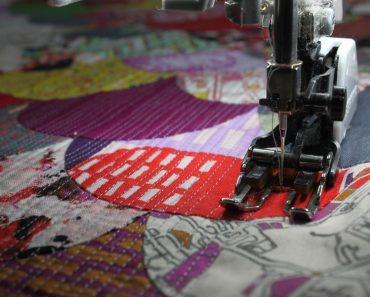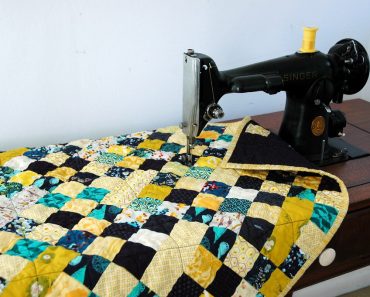The bottom layer of the quilt sandwich is the quilt back, which is a three-layer packet made up of the quilt top, batting, and backing. When we turn a quilt over to look at its reverse side, the backing is the layer that comes into view. It’s simple to make quilt backing and it may be done with either lightweight or wide panels of fabric specifically created for this purpose.
In addition to the quilted fabric, you may hear quilt backing referred to as the quilted lining or simply the quilt back.

How Much Is Needed?
To allow for the deformation and “shrinkage” that occur during the quilting process, and to provide a bit of margin for squaring up the entire quilt sandwich once the quilting is finished, the quilt backing and batting (the middle layer of the sandwich) are cut slightly bigger than the quilt top.
It’s important to use more than the minimum amount of backing and batting when quilting a king-size bed. This is because, as previously stated, it’s preferable to have at least three to four extra inches of backing and batting extending beyond all sides of the quilt. If you want (and even more backing) to fold it and bring it to the front of the quilt to make a self-binding, your backing should be at least 6″ – 8″ wider and taller than your quilt top. This type of binding isn’t as durable as double-fold binding, but it’s an alternative for quilts that won’t get a lot of usages.
Fabric panels must be pieced together to make a backing for large quilts, although several fabric producers provide a nice selection of wide backing fabrics that allow you to have a seamless back.
If you want to offer the quilted project to someone else for quilting, check the requirements of the quilter before beginning.
Miniature Quilts
A single piece of larger quilting fabric (usually the same width as your full quilt) is used to make a miniature quilt backing.
Reversible Quilt Options
Make a reversible quilt by using the second quilt top for its back. You may expect hand quilting to be more difficult because of the many extra seam allowances found in two quilt tops, so plan to machine quilt.
When sewing a reversible quilt, be sure to press open seam allowances rather than pressing them to the side.
Designs
- If both the quilt top and the backing will be visible while in use, use a complementary fabric.
- Choose a quilt backing with an unusual design and then a quilt made from the back along the print lines of the fabric to bring it to the front.
- On the back of the quilt, a hectic backing hides less-than-perfect quilting stitches.
- Don’t be afraid to use any fabric you like—or need.
How to Make Quilt Backing Out of Common Fabrics
Remove the selvages: Fabric selvages may frequently cause puckers along their length, and they should be removed before using fabric as a backing. Examine how much breadth will be left after you’ve cut off the selvages.
Cut a single panel backing: Quilting fabric with a recommended maximum width of 35″ is ideal for quilts up to that size. Not all fabrics are the same width, so keep in mind the 4″ excess limit. When a single panel of cloth is utilized, selvages are generally not necessary since they will surely be trimmed away following quilting.
Calculate yardage for a single panel: Divide the figure by 36″ to determine the necessary yardage. Add a little more to allow for shrinkage. and Add 4″ (or another extra) to the height of the quilt.

Larger Projects
Most quilters avoid laying two pieces of cloth side by side to make a backing for fear that doing so would place the seam that connects the panels at the quilt’s midpoint, where quilts are commonly folded. The seam might deteriorate over time if subjected to frequent folding.
Its origins are obscure, but it is nonetheless a common belief. It’s debatable whether or not it’s true, or if it’s simply another viewpoint that we’ve accepted as truth. We should never fold quilts the same way again because doing so might produce permanent creases that are difficult to fix.
A popular quilt backing design is one that features a wide middle panel flanked by two lesser panels, as depicted in the image, but there are times when this arrangement may not be ideal.
Quilt Backing Panels: How to Sew Them Together
- Determine Length
Determine the length of your yardage as directed above. Measure the width of your quilt and add 4″ to 6″ (or worked-in excess).
- Design Backing
For each seam, you’ll use to sew it to a neighbouring panel, make a backing that is the same width as the one you’re using.
- Cut Panels
Cut strips to the length of your quilt, plus 4″ to 6″ (or extra) for a cleaner finish.
- Sew Panels Together
With a 1/2″ seam allowance, assemble the sections. Press seams open to reduce bulk.
- Press Backing
Press backing before use.


